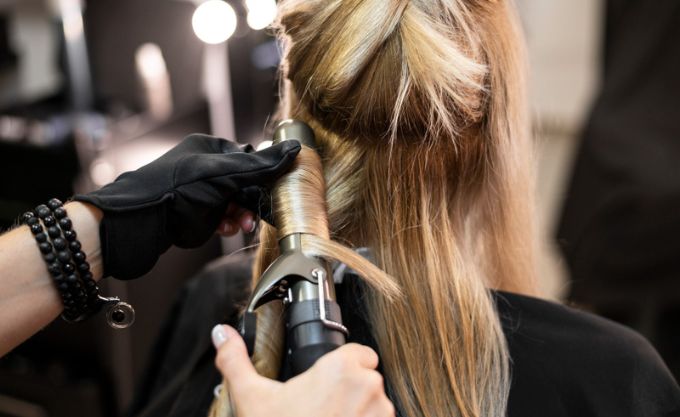Adding Highlights and Lowlights to Hair: Useful Tips to Consider in 2024
- Written by Victor Lordhair
- Jul 11, 2024
- |
- 4 min read
 Listen to the full text
Listen to the full textFeeling a hair color itch but dyeing it completely seems a bit much? Highlights and lowlights can help. They are helping women add hair vibe without major color commitments. Confused between highlights and lowlights?
Well, highlights can be thought of as sunshine-kissed strands. They lighten things up. Lowlights, on the other hand, can add depth and richness. Like chips in a cookie!
But which one is right for you? And how can you achieve that dream hair in 2024? Don’t worry, we’ve got you covered. In this blog, Lordhair will spill tea on highlights, lowlights, and everything in between.
Let’s start with understanding both hair dying techniques' exact meaning and purpose.
What are Highlights for Hair?
For those who visit beaches during summer, they must have noticed how their hair gets lighter in the pleasant sun. Highlights are like bottling that sunshine. They’re streaks of lighter hair throughout your natural color. Highlights add dimension to your strands, making them look fuller and more interesting.
From subtle blonde streaks to bold pops, highlights come in all shades. They can frame your face and add volume to fine hair. They can even cover up some unwanted grays. No matter what your goal is, highlights can be your secret weapon for gorgeous, sun-kissed hair, all year round.

What are Lowlights for Hair?
Think of your hair as a beautiful forest. While highlights are sunbeams peeking through the leaves, lowlights take things in the other direction. They are those rich, shadowy areas that add depth and mystery. They’re sections of hair colored a shade or two darker than the natural base.
Got thin hair? Lowlights can act like a magic trick for you! They can make it appear thicker and fuller. They can also add richness and dimension to flat, one-toned hair. In case, you went a little overboard with the highlights and now your hair looks brassy, lowlights can help tone it down and create a more natural look.
What are Useful Tips for Hair Highlights and Lowlights?
Adding highlights or lowlights can really elevate your hair game. They can add dimension, improve volume, and create a natural, fashionable look. But with a rainbow of color options, choosing the right highlight or lowlight shade can literally feel overwhelming.
So how can you select the right hair highlight or lowlight? Fear not, here are some useful tips that will guide you towards your perfect match:
1 Subtlety is key for natural brunettes
Ah, the classic and stylish brunette hair color… It definitely looks mysterious and interesting. Dark hair is usually thicker and looks more healthy. However, if you’re thinking of highlighting it, we recommend keeping highlights within three shades lighter than your natural color. This will ensure a natural, sun-kissed look that flatters your features.
When it comes to lowlights, tones of red and purple can add a touch of warmth and richness. Why? Because brown hair lightens naturally with red undertones first. Red lowlights will make your highlights even more natural. In fact, it will prevent them from looking too stark against your base color.
Don’t forget to check out these sources as well:
10 celebrities who changed hair color and style
11 spring hair color trends for 2024
11 summer hair color trends and ideas for 2024
12 hair colors for thin hair and damage
2 Golden touch for blondes
If there’s a competition about who has more freedom to play with highlights, definitely natural blondes are going to be WINNER! They can add depth, dimension, and texture to hair. Making your thin and fine hair look fuller and thicker! You can venture beyond the three-shade rule and experiment with lighter blonde tones.
However, to prevent your hair from looking brassy or washing out your complexion, consider gold or copper lowlights. These warm tones are especially flattering for blondes with fair skin. Remember, the key is to achieve a well-blended natural look. Avoid overdoing the highlights in the back though. That’s because the sun naturally lightens the front strands. So, keep the back subtle for a more realistic effect.
3 Go for seasonal twists
One of the biggest tips our hair experts have to share in 2024! Consider adapting your highlights and lowlights to the seasons. For example, in winter, when skin tones tend to be paler, opt for slightly darker highlights. This will prevent your face from appearing washed out. It will complement the cooler winter months.
Conversely, we recommend welcoming lighter highlights in summer. Because they literally mimic the natural lightening effect of the sun and will add vibe to the hair!
4 Make professionals your BFF
While highlights and lowlights might seem tempting to try at home, Lordhair suggests leaving the process to the professionals. Unlike single-process coloring, highlights and lowlights require a customized approach. In simple words, each shade needs to be carefully blended just not to improve your hair color but also to complement your skin tone.
A skilled hairstylist will consider all these factors. They will create a masterpiece that flatters your unique features.

Can You Also Add Highlights and Lowlights to Hair Systems?
Short answer: YES!
The magic of highlights and lowlights extends beyond the natural hair. Women’s wigs and men’s hair system wearers can also join the party! However, you have to make sure they are made using 100% human hair. Luckily, Lordhair's non-surgical hair replacements are crafted with high-quality human strands that can be colored and styled just like your natural hair.
Meaning, you won’t be facing any issues achieving stunning highlights, lowlights, or, even a combination of both for a truly unique and realistic look.
Check out how amazing Michael looks after wearing one of our premium men’s human hair wigs:
Highlights and Lowlights for Hair: Final Words
There you go!
We shared some useful tips for applying highlights and lowlights. Remember, a consultation with your stylist is key to unlocking your perfect hair match. They can access your hair type, skin tone, and desired look to create a customized masterpiece. So, don’t be afraid to experiment and embrace the world of highlights and lowlights.
With a little planning and professional expertise, you’ll get a chance to achieve gorgeous, dimensional hair that turns heads wherever you go. Got any queries to ask? Contact us today and have them answered by our hair experts. We recommend checking out lace hair systems, Swiss lace hair systems, and skin hair systems.
Happy highlighting!


